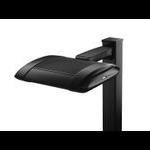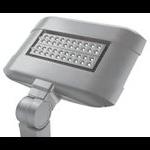Breadcrumb Navigation
- Applications
- Case Studies
- Port Columbus International Airport
Port Columbus International Airport
In an effort to improve lighting performance and save energy, airport officials recently retrofitted the Port Columbus arrival and departure roadway and pedestrian walkway lighting with Cree 304 Series™ luminaires.
- Opportunity
- Benefit
In fall 2010, the airport underwent a major customer service initiative that included a curb-front beautification project to make the area cleaner, safer and more welcoming to travelers. CRAA was in search of a 24/7 lighting solution with virtually no maintenance.
As part of the CRAA’s “15 by 15” campaign (CRAA’s energy reduction campaign to reduce energy consumption by 15 percent by the year 2015), the airport replaced nearly 350 metal halide fixtures with Cree® 304 Series™ LED luminaires. The energy-efficient luminaires reduced energy consumption by nearly 60 percent compared to the previous metal halide system. As a result, CRAA was able to exceed its current energy reduction goal as it moves towards its long-term goal of a 15 percent energy reduction by 2015.
Paul Kennedy, manager of energy and environment at the Columbus Regional Airport Authority, became aware of Cree luminaires when airport maintenance personnel upgraded 100 watt high pressure sodium (HPS) fixtures in one of the airport’s Sawyer Road tunnels with Cree Edge™ flood wall-mounted luminaires for the purpose of energy and maintenance cost savings.
While conducting research on sustainable approaches for the curb-front project, Kennedy took notice of publicity about Boston’s General Edward Lawrence Logan International Airport and the positive results of the Cree installation. A cost analysis comparing the savings and payback period of a Cree solution to metal halide showed Kennedy that a retrofit with LED luminaires provided the most efficient and highest performing result.
“We sought to install one-for-one replacements that would improve lighting performance and outlast the old HID system that was costly to maintain. All things considered, after realizing the short payback timeframe and energy and maintenance savings, the decision was easy to make,” said Kennedy.






